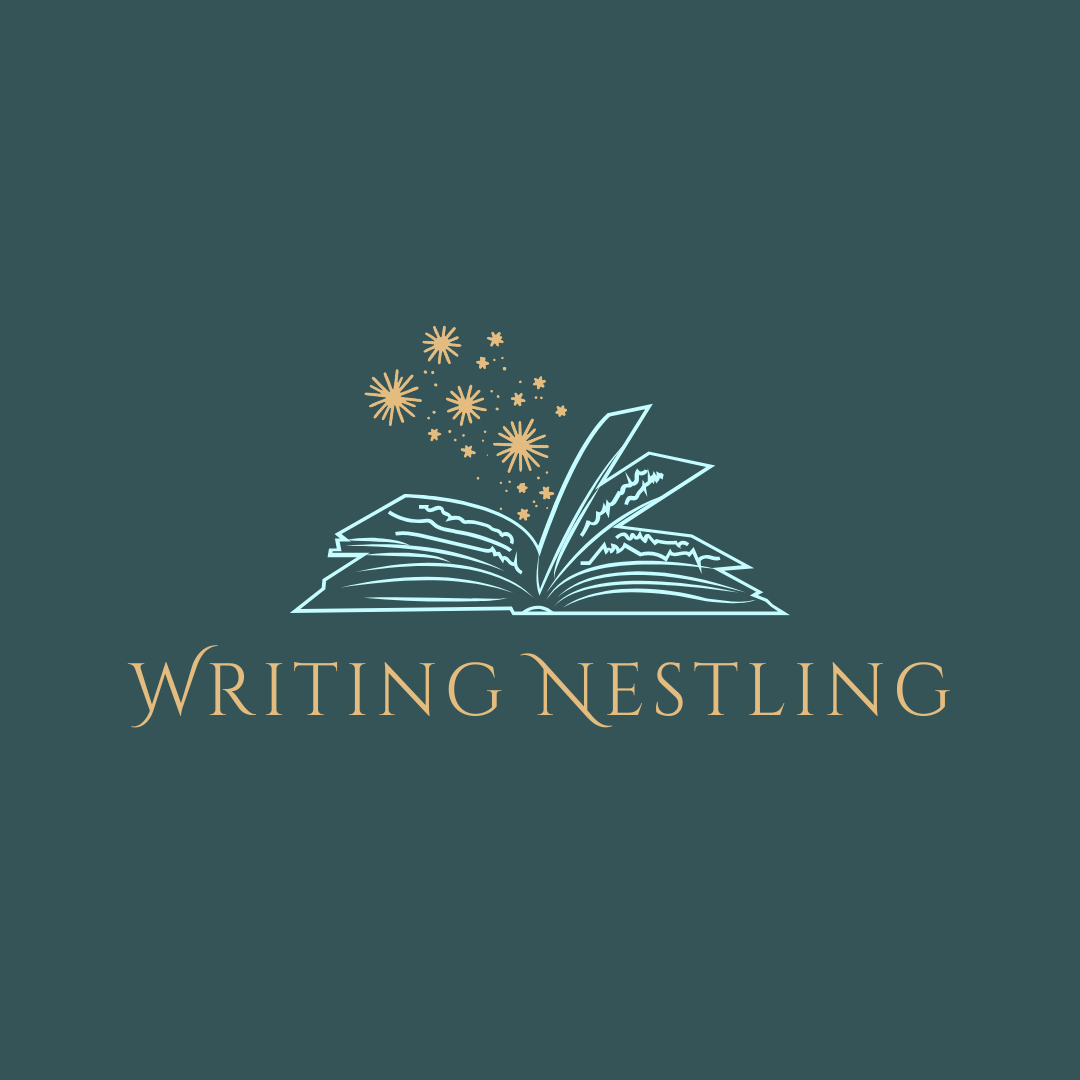What Is Shadow Writing? (9 Best Tips & Types)
What Is Shadow Writing?
What Is Shadow Writing? In the clandestine world of literary creation, where stories are born in the shadows and voices echo in anonymity, the enigmatic practice known as Shadow Writing emerges as a captivating dance between creativity and secrecy.
This intriguing craft revolves around the collaboration between a skilled wordsmith, often referred to as a ghostwriter or shadow writer, and an individual seeking to share their narrative without necessarily claiming authorship.
It transcends traditional notions of authorial identity, weaving a web of collaborative artistry where the unseen hand guiding the pen takes center stage.
Shadow Writing is not mere ghostwriting; it is a clandestine symphony of voices, an art form that navigates the delicate balance between creativity, confidentiality, and the alchemy of weaving narratives that resonate with authenticity.
In this exploration, we embark on a journey to unravel the intricacies, challenges, and innovations that define the world of Shadow Writing, where the written word becomes a clandestine collaboration between visible and invisible storytellers.
What Is Shadow Writing?
Shadow writing typically refers to the act of replicating or imitating another person’s writing style, often with the goal of learning or practicing the nuances of that style. Here’s a step-by-step process on What Is Shadow Writing:
Select the Model
Choose a writer or a specific piece of writing whose style you want to emulate. This could be an author, a journalist, or anyone whose writing you admire.
Analyze the Style
Read the selected work thoroughly and analyze the writing style. Pay attention to sentence structure, vocabulary, tone, and any unique elements that characterize the author’s writing.
Identify Key Elements
Break down the writing into key elements such as sentence patterns, use of figurative language, pacing, and overall structure. Identify the distinctive features that make the writing stand out.
Practice Imitation
Begin practicing by imitating the selected style. Write passages or short pieces in the same manner as the chosen author. Focus on replicating the identified key elements.
Compare and Adjust
Compare your shadow writing to the original work. Take note of the similarities and differences. Adjust your writing to better match the style you are trying to emulate.
Receive Feedback
If possible, seek feedback from others who are familiar with the original writer’s style. Constructive feedback can help you refine your shadow writing and improve your ability to capture the desired style.
Repeat and Refine
Continue the process of shadow writing with different pieces from the same author or with works from various writers. The goal is to expand your range and become adept at adopting different writing styles.
Apply the Learned Style
Once you feel comfortable with the shadow writing process, apply the learned style to your original content. Use the acquired skills to enhance your own writing while maintaining your unique voice.
Ethical Considerations
Be mindful of ethical considerations. While shadow writing for personal development is a common practice, it’s important to distinguish between learning and copying for professional or academic purposes.
Remember that the ultimate aim of shadow writing is to develop your writing skills by studying and understanding the techniques employed by other writers. It’s a valuable exercise in honing your craft and expanding your repertoire of writing styles.

Types Of Shadow Writing
“Shadow writing” can refer to different concepts depending on the context, so I’ll provide explanations for a few possible interpretations:
Ghostwriting
In the context of literature or content creation, “shadow writing” might be a synonym for ghostwriting. Ghostwriting involves one person (the ghostwriter) writing content on behalf of another person (the author), who takes credit for the work.
This is common in the creation of books, articles, speeches, or other written materials, where someone may not have the time, skills, or expertise to write, but they want their name associated with the content.
Shadowing in Learning and Development
In educational settings, “shadow writing” could refer to a learning technique where a person learns a skill or subject by closely observing and imitating someone who is more experienced.
For example, in the medical field, medical students might engage in “shadow writing” by observing and mimicking the notes and reports of experienced practitioners.
Shadow Writing as a Creative Exercise
Another interpretation might involve a creative writing exercise where the writer explores the concept of shadows, either metaphorically or literally.
This could involve crafting a story or poem that delves into the symbolism of shadows, their mysterious nature, or the idea of shadows as reflections of hidden aspects of individuals or society.
Automatic Writing or Psychography
In a paranormal or spiritual context, “shadow writing” might be associated with automatic writing or psychography.
This is a phenomenon where a person allows their hand to write or type without consciously controlling the process. Some believe that this allows messages or insights from the subconscious mind, spirits, or other entities to come through the writing.
It’s important to clarify the specific context or field in which the term “shadow writing” is being used to provide a more accurate explanation.
The Art of Emulating Voices
The Art of Emulating Voices is a mesmerizing dance of linguistic dexterity, where words become the chameleons of expression.
It is the symphony of a writer’s ability to seamlessly don the persona of another, breathing life into diverse voices with the stroke of a pen.
Like a literary shape-shifter, this art transcends mere mimicry, delving into the profound intricacies of tone, cadence, and idiosyncrasies that make each voice unique.
It is the silent maestro orchestrating the harmony of perspectives, weaving a tapestry of narratives that captivate and resonate.
In this realm, the ghostwriter becomes a virtuoso, painting with the hues of empathy and insight, creating a masterpiece that blurs the boundaries between author and artisan.
The Art of Emulating Voices is not just a craft; it is a kaleidoscopic journey into the myriad shades of human expression, where every written word is a brushstroke, and every narrative a symphony waiting to be composed.
Understanding the concept of emulation
Understanding the concept of emulation is akin to unraveling the delicate threads that weave the fabric of artistic expression.
Emulation is not mere imitation but a nuanced art form, demanding a profound comprehension of the essence one seeks to replicate.
It is the alchemical process of capturing the soul, the very heartbeat of a style or voice, and breathing it back to life through the strokes of one’s own creativity.
It is a symbiotic dance between inspiration and innovation, where the emulator becomes a curator of influence, distilling the quintessence of various voices to birth something uniquely resonant.
In the realm of literature, emulation transcends mimicry, becoming a gateway to new perspectives and narratives.
It is an empathetic journey, an intimate exploration into the nuances of tone, rhythm, and emotion, allowing the artist to not just echo but to amplify the voices that have left an indelible mark on the tapestry of human expression.
Ghostwriters vs. Shadow Writers
In the clandestine world of storytelling, the battle unfolds between Ghostwriters and Shadow Writers, two enigmatic figures wielding pens as their weapons. Ghostwriters, like literary phantoms, breathe life into tales without claiming the limelight, crafting narratives that seamlessly blend with the author’s vision.
On the other hand, Shadow Writers step even further into the shadows, eclipsing their own existence to embody the voice of another entirely.
It’s a dance of anonymity versus visibility, with Ghostwriters whispering tales and Shadow Writers orchestrating a symphony of voices that transcends the bounds of individuality.
The former is a subtle collaborator, while the latter is an elusive chameleon, both navigating the intricate dance of authorship and creation.
In this clandestine realm, the battle for literary prowess is waged silently, leaving readers to wonder where the author ends and the wordsmith begins. Ghostwriters and Shadow Writers: two sides of the same clandestine coin, each leaving an indelible mark on the pages of unwritten stories.
Distinguishing characteristics
Distinguishing characteristics set apart the craftsmen of the written word in the literary labyrinth, illuminating the nuanced differences between Ghostwriters and Shadow Writers.
Ghostwriters, akin to skilled specters, harmonize with the author’s voice, seamlessly blending their own prowess with the client’s vision.
Their hallmark lies in the finesse of adaptation, a chameleon-like ability to mirror diverse styles while remaining invisible.
Contrastingly, Shadow Writers take on a more elusive persona, transcending mere mimicry to embody entirely new voices with an unprecedented authenticity.
Their distinguishing feature is the transformative power to become literary shape-shifters, leaving readers questioning the very essence of authorship.
While Ghostwriters leave a faint trace of their artistry, Shadow Writers leave an indelible mark, making the distinction a delicate dance between subtle collaboration and complete metamorphosis.
In the labyrinth of words, these distinguishing characteristics navigate the uncharted territories of authorial identity, leaving behind narratives that defy traditional boundaries.
The Intricacies of Confidentiality
The Intricacies of Confidentiality in the clandestine world of wordsmithery resemble a delicate dance on the edge of secrecy.
It is the unspoken pact, a literary handshake that binds the alliance between the wielder of stories and the keeper of secrets.
Nondisclosure agreements become the silent guardians of untold narratives, ensuring that the whispered confessions and clandestine tales remain securely cocooned within the writer’s chamber of trust.
The dance of confidentiality demands a finesse akin to tightrope walking, where the Ghostwriter and the Shadow Writer delicately balance the art of storytelling with the ethical responsibility of guarding the author’s anonymity.
It is a labyrinth where every word echoes with a promise, every sentence resonates with discretion, and the unwritten code of silence becomes as potent as the narratives themselves.
In this realm, confidentiality is not just a shield but a tapestry, woven with the threads of trust, integrity, and the shared understanding that some stories are meant to remain veiled in the sanctum of privacy.
Nondisclosure agreements and their role
Nondisclosure agreements (NDAs) stand as the silent sentinels in the realm of clandestine creativity, shaping the delicate balance between secrecy and collaboration.
These legal compacts are the guardians of whispered confidences, forging an unassailable fortress around the untold narratives crafted by Ghostwriters and Shadow Writers.
Functioning as the unsung heroes of authorial trust, NDAs delineate the boundaries within which the dance of creativity unfolds.
They are not mere legal formalities; they are the sacred scrolls that bind the storyteller and the wordsmith in an unspoken covenant of confidentiality.
NDAs become the inked quills that etch the pact of discretion, ensuring that the creative process remains veiled, and the identities of those behind the narrative curtain are safeguarded.
In the symphony of storytelling, Nondisclosure agreements orchestrate the silent but crucial notes that compose the harmonious collaboration between the teller and the weaver of tales.

Collaborative Processes in Shadow Writing
Collaborative Processes in Shadow Writing transform the solitary act of crafting stories into a captivating duet between creator and conductor.
It’s a dance of minds, where the Ghostwriter and the hidden author move in sync, orchestrating narratives that transcend individual genius.
This clandestine partnership, like an ethereal waltz, requires finesse and a profound connection. Communication becomes the unseen thread weaving through the process, a telepathic ballet of ideas and visions.
The collaboration is not just a meeting of minds but an alchemical fusion of creativity, where the Ghostwriter’s pen becomes an extension of the author’s unspoken thoughts.
In this literary tango, both partners pirouette through the delicate balance of autonomy and synchronization, crafting a narrative that resonates with the heartbeat of two storytellers entwined in a dance of shared inspiration.
The collaborative processes in Shadow Writing are a mesmerizing choreography, birthing stories that are not just written but performed, a testament to the transformative power of creative unity.
Establishing a strong author-ghostwriter relationship
Establishing a robust author-ghostwriter relationship is akin to crafting a symphony; it requires harmony, trust, and a shared vision for the crescendo of creativity.
It begins with the delicate notes of open communication, where both parties orchestrate their expectations and aspirations for the narrative masterpiece in progress.
The conductor, or author, sets the tone, imparting the nuances of their voice, while the Ghostwriter tunes in with an empathetic ear.
It’s a collaborative melody where respect for each other’s expertise and a genuine understanding of the narrative’s heartbeat are paramount.
This relationship is a dynamic dialogue, an ongoing conversation that transcends the written word. The Ghostwriter becomes a literary confidante, translating ideas into prose while preserving the authentic cadence of the author’s voice.
Like the ebb and flow of a well-coordinated performance, a strong author-ghostwriter relationship is built on a foundation of mutual respect, clear communication, and a shared dedication to composing a narrative symphony that resonates with both minds.
The Economics of Shadow Writing
In the clandestine corridors of literary creation, The Economics of Shadow Writing unfurls as a captivating ballet between creativity and commerce.
It’s a delicate waltz where words transcend their intrinsic value, and the price of storytelling is a dance of its own. Ghostwriters and Shadow Writers, the unsung maestros of narratives, navigate the intricate steps of pricing structures and industry standards.
The quill, once dipped in the ink of inspiration, is also dipped in the economic inkwell, where factors like complexity, exclusivity, and time constraints become the currency of creation.
It’s an alchemy of value where the worth of a story is not just measured in words but in the intangible magic of its impact.
As the curtains draw on this economic performance, the true artistry lies not just in the crafting of tales but in the ability to weave a financial tapestry that reflects the priceless nature of stories told in the shadows.
The Economics of Shadow Writing is a ballet where creativity pirouettes hand in hand with commerce, and the final masterpiece is a fusion of literary brilliance and economic pragmatism.
Pricing structures and industry standards
Pricing structures and industry standards in the clandestine realm of shadow writing are a carefully orchestrated duet, where creativity and commerce engage in an intricate dance.
Like a choreographed ballet, pricing structures reflect the nuances of the craft, accounting for the complexity of weaving narratives, the exclusivity of the content, and the time invested in crafting each literary masterpiece.
Ghostwriters and Shadow Writers, the invisible artisans of storytelling, adhere to industry standards that vary based on their expertise, project requirements, and the unique demands of their clientele.
This dance of dollars and narratives is not merely about assigning a monetary value to words but recognizing the intangible worth of capturing the essence of a story.
In this nuanced performance, pricing structures become a key instrument, resonating with the melody of creativity while acknowledging the economic reality of the unseen hands that craft the tales lingering in the shadows.
Challenges and Controversies
In the clandestine universe of shadow writing, Challenges and Controversies emerge as the unpredictable tempests that ruffle the pages of secrecy.
It’s a perilous journey where the quill, once a silent confidante, becomes a double-edged sword. Plagiarism concerns lurk in the shadows, threatening to cast doubt on the authenticity of collaborative narratives.
Public perception, like a capricious muse, oscillates between awe and skepticism, raising ethical debates that echo in the corridors of literary integrity.
Legal implications weave a complex tapestry, as the invisible hand guiding the pen navigates the precarious boundaries of intellectual property.
Yet, in the face of controversy, the shadow writer perseveres, crafting stories that defy the storm, leaving an indelible mark on the landscape of clandestine creativity.
Challenges and Controversies in shadow writing are not just obstacles; they are crucibles forging narratives that withstand the test of both secrecy and scrutiny, emerging as resilient tales from the tumultuous cauldron of creative collaboration.
Plagiarism concerns and mitigations
Plagiarism concerns cast a looming shadow over the clandestine world of shadow writing, where the delicate dance of collaboration teeters on the precipice of authenticity.
In this realm, the Ghostwriter and Shadow Writer navigate a labyrinth of originality, constantly mindful of the ethical tightrope they tread.
Mitigating plagiarism concerns becomes a meticulous art, requiring not only a keen understanding of intellectual property but also a commitment to preserving the unique voice of the author.
Navigating this treacherous terrain involves employing rigorous research methodologies, proper citation practices, and a meticulous review process that ensures the narrative remains a genuine creation.
Clear communication between author and writer becomes the linchpin, as transparency and collaboration serve as powerful tools in dispelling concerns of impropriety.
In the face of the plagiarism specter, the shadow writer becomes a guardian of integrity, weaving narratives that bear the authentic stamp of collaboration, not imitation.
Case Studies
Case Studies in the clandestine world of shadow writing unfold as riveting narratives within narratives, where the inked pages tell tales of collaboration shrouded in secrecy.
These stories within stories are the cryptic maps guiding the reader through the labyrinth of creative alliances, showcasing the triumphs, pitfalls, and enigmatic twists of the ghostwriter’s pen.
Each case study is a clandestine chronicle, a literary detective story that unravels the complexities of voice emulation, collaboration dynamics, and the intricate dance of creativity and commerce.
Like a secret society revealing its coded rituals, these case studies illuminate the covert artistry behind the scenes, offering a glimpse into the invisible hands that sculpt narratives in the shadows.
In this mysterious anthology of shared storytelling, case studies emerge not just as lessons but as tantalizing glimpses into the clandestine craft, where the art of collaboration becomes a whispered saga waiting to be deciphered.

High-profile shadow writing success stories
High-profile shadow writing success stories emerge from the clandestine corridors of creativity, where literary artisans weave tales that resonate across the echelons of fame.
Behind the scenes, ghostwriters and shadow writers take center stage, penning narratives that elevate public figures into literary luminaries.
These success stories are the well-guarded secrets of the creative world, where collaboration transforms into a symphony of voices harmonizing seamlessly.
From memoirs that capture the essence of icons to speeches that echo with profound eloquence, these high-profile collaborations become testaments to the power of collaboration and the artistry of the unseen hand guiding the pen.
These success stories transcend mere ghostwriting; they are the silent architects of cultural narratives, leaving an indelible mark on the literary landscape.
In the shadows, success whispers stories of triumph, proving that behind every celebrated name, there’s often an invisible wordsmith, crafting legacies with the stroke of a pen.
Future Trends and Innovations
In the uncharted realms of shadow writing, the crystal ball gazes into the Future Trends and Innovations, revealing a literary landscape adorned with the jewels of innovation.
As the digital era unfolds, the quill evolves into a virtual brush, and the ghostwriter becomes a digital alchemist.
Artificial intelligence emerges as a silent collaborator, offering a dance of algorithms that mimics the subtleties of human expression.
The future promises not just invisible hands guiding the pen but perhaps the ethereal embrace of virtual minds seamlessly intertwining with the creative process.
Blockchain technology may herald a new era of transparency, ensuring the authenticity of narratives while preserving the delicate balance of confidentiality.
The future trends in shadow writing are not merely inked in words but etched in the binary code of possibility, where the next chapter of collaborative creativity awaits with the promise of unseen innovations waiting to reshape the clandestine world of storytelling.
Technological advancements in shadow writing
Technological advancements in shadow writing unfurl as a transformative tapestry, redefining the very fabric of collaborative creativity.
As the digital era unfolds, the traditional quill metamorphoses into a sleek stylus, and the ghostwriter navigates an augmented realm of possibilities.
Artificial intelligence emerges as an invisible companion, not overshadowing but enhancing the creative process. Machine learning algorithms dissect nuances of voice and style, enabling ghostwriters to emulate a spectrum of tones with unprecedented precision.
Cloud collaboration platforms become the clandestine meeting rooms, where authors and ghostwriters convene across time zones.
Blockchain technology, like an invisible inkwell, ensures the unassailable authenticity of collaborative narratives.
In this tech-driven Renaissance, the collaboration of man and machine becomes a seamless dance, promising not just invisible hands guiding the pen but a symphony of algorithms orchestrating a new era of shadow writing innovation.
Frequently Asked Questions about What Is Shadow Writing?
What exactly is Shadow Writing?
Shadow writing refers to the practice of replicating or imitating another person’s writing style for the purpose of learning and refining one’s own writing skills. It involves closely studying an author’s work and emulating their language, structure, and overall writing approach.
Why would someone engage in Shadow Writing?
Individuals engage in Shadow Writing to gain a deeper understanding of various writing styles. It provides a structured method for writers to learn from established authors, helping them improve their craft by incorporating diverse techniques into their own work.
How does one start with Shadow Writing?
To begin Shadow Writing, choose a writer or a specific piece of writing that you admire. Analyze the selected work, identify key elements of the writing style, and practice imitation by replicating those elements in your own writing. The process involves a cycle of learning, practicing, and refining.
What should be considered when selecting a model for Shadow Writing?
When selecting a model, consider your writing goals and preferences. Choose a writer or piece that aligns with the style you want to develop. It’s also beneficial to pick someone whose work resonates with you and whom you find inspiring.
Can Shadow Writing be applied to different genres and forms of writing?
Absolutely. Shadow Writing is versatile and can be applied to various genres, such as fiction, non-fiction, poetry, and more. It is a flexible technique that helps writers adapt to different writing styles and experiment with diverse forms of expression.
Is Shadow Writing the same as plagiarism?
No, Shadow Writing is distinct from plagiarism. Plagiarism involves presenting someone else’s work as your own without proper attribution, whereas Shadow Writing is a learning and practice exercise. It involves openly acknowledging the source of inspiration and is intended for personal growth and skill development.
How can one ensure ethical practices while engaging in Shadow Writing?
To ensure ethical practices, use Shadow Writing for personal development rather than for professional or academic purposes without proper attribution. It’s crucial to distinguish between learning from a model and appropriating someone else’s work without permission.
Can Shadow Writing enhance one’s original writing style?
Yes, the ultimate goal of Shadow Writing is to enhance one’s original writing style. By studying and imitating various writing styles, individuals can incorporate new techniques and perspectives into their own work, leading to a more versatile and refined writing style.
Is feedback important in the Shadow Writing process?
Yes, feedback plays a crucial role in the Shadow Writing process. Seeking input from others familiar with the original writer’s style can provide valuable insights and help writers refine their shadow writing, ensuring a more accurate emulation of the chosen style.
Can Shadow Writing be a continuous learning process?
Absolutely. Shadow Writing is a continuous learning process that allows writers to explore different styles throughout their careers. As writing styles evolve, engaging in ongoing shadow writing can contribute to a writer’s adaptability and growth over time.
Conclusion
In conclusion of What Is Shadow Writing, Shadow Writing stands as a dynamic and invaluable tool for writers seeking to refine their craft and broaden their artistic horizons.
Through the deliberate emulation of established authors, individuals embark on a journey of deep exploration into diverse writing styles.
This process, marked by meticulous analysis, practice, and refinement, serves as a bridge between admiration for a particular author and the development of one’s unique voice.
While ethical considerations underscore the importance of using Shadow Writing for personal growth rather than plagiarism, the overarching goal remains the enhancement of one’s original writing style.
Embracing the continuous nature of this learning process, writers find themselves equipped with a rich tapestry of skills and perspectives, allowing them to navigate the ever-evolving landscape of literature with creativity, adaptability, and a nuanced understanding of the art of writing.
In the realm of self-improvement, Shadow Writing emerges not merely as an exercise but as an ongoing expedition into the boundless realms of literary expression.






